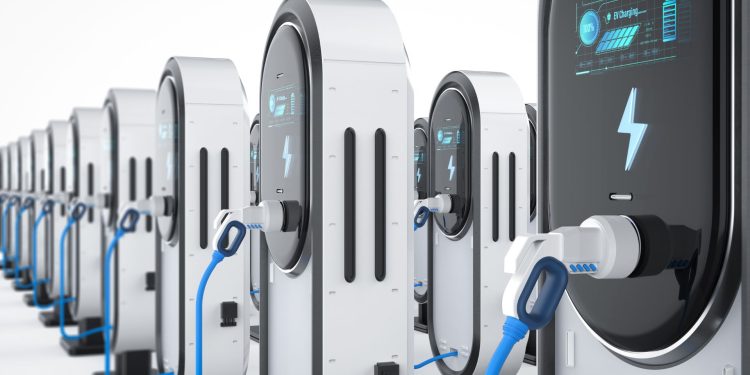Getting an EV (an Electric Vehicle) is a great way to reduce your environmental footprint. Besides, you may get perks and incentives from the government. This article will cover the charging options you have at home and on the road.
Since many electric cars (EVs) are used, it is clear that knowing how and where to recharge them is very important to EV drives now as well as to those who are currently considering EVs. This guide will cover the step by step of EV charging such as how to charge at home, where to charge at public and specific thing that needs to be taken into observation for charging in India.
EV Charging Basics
whenever we fill an electric car it is completely different from regular petrol fuelling. An EV charging connection occurs when the car is connected to such electric power sources through a charging port. The EV charging speed depends on the type of charger as well as power usability.
There are three main levels of EV charging:
- Level 1 Charging: It is the slowest form of charging that runs on a conventional 120-volt AC outlet that is installed in houses. It is usually the cheapest and easiest solution as it will cost you 24 hours (or even more). In the case of EV, this method may take longer than waiting for a power drop.
- Level 2 Charging: As a mains-powered installation, it requires a 240-volt outlet, similar to the one that supplies large appliances like dryers. The recharging time is also dramatically shortened, typically 4-8 hours to be exact.
- DC Fast Charging (Level 3): Through these fast chargers, the batteries are charged in the shortest time frames which are comparable to approximately 80% of their total capacity in 20-30 minutes. Predominantly, they are located at public charging stations and for use will require you to pay more.
Electric Car Charging At Home
Do you have the ability to replace your normal socket at home with a charger for an electric car?
Yes, you can plug an electric vehicle into a power outlet ( level 1 charging ) at home just like you charge a phone, but it is slow and may not be economical if you drive long distances.The majority of EV users tend to opt for fast charging stations (level 2 or level 3) which help users save time and most importantly they are more feasible as an alternative. Abstracting the level of residences, many EV owners opt to install a level 2 charging station.
What Is Needed To Charge An Electric Car At Home
To charge an EV at home, you’ll need:
- A dedicated circuit: Additionally, since the current methods require level 2 charging, it is essential for them not to overload your home electrical system.
- A home charging station: These can be purchased from a certified electrician and should be installed in the dedicated 240-volt socket.
- A charging cable: Normally, most EVs are sold with a standard Level 1 charging cable, although those other EVs that prefer a faster charge, will be advised to purchase a Level 2 cable from a home charging station.

How To Charge Every Car At Home In India
In India, the segment of EVs is increasing, and the opportunities for charging one’s vehicle at home as well are getting more. Here’s what you need to know:
- Installation of a dedicated charging point: Similar to other countries, a home Level 2 charging station is where the bulk of the charging should be done.
- Access to a 240-volt outlet: These types are stocked for Indian homes instead of the already popular 120-volt outlets.
- Government incentives: Subsidies and incentives are provided by the Indian government for Gong ji ya Chua, and they can also be utilized to bring down the cost.
EV Charging Stations
Multiple businesses, universities, and governments provide zero-charge EV charger installation to promote EV adoption. Here are some common places where you might find free charging stations:
- Shopping malls and retail stores: Others provide a free charging service as a spur to bring in customers to their stores.
- Workplaces: Most employers have this charging facility as a kind of perk for employees.
- Public parking garages and lots: Sometimes the cities offer free charging stations to convince drivers to move on cleaner transportation.
- Dealerships: Nowadays, EV retailers oftentimes have chargers that are free for the customers.
Travelling EV Charging Stations Along The National Highway
Public charging stations come with a variety of ranges regarding instant connection and price. Electro-applying technologies similar to PlugShare, ChargePoint, etc. can be used to locate the charging station and plan your route. These stations can be found at:
- Highway rest stops: Ideal for long trips as many are DC fast chargers which will help you save up on fuel.
- Urban areas: More and more exist in downtown areas and in the suburbs.
- Residential complexes: Certain residential buildings and housing communities base their operations on shared electric charging units.
Conclusion
The convenience of charging electric vehicles is gradual but inevitable, as infrastructure is improved. Also, people can buy L1 chargers at home which can be linked with normal plugs while the home charging stations which have L2 chargers will provide more power to fuel up the car faster. Interconnected public charging points including free ones, are one of the reasons that is a lot simpler to keep your energy energized and go on a trip.
India’s developing EV market is boosted by government incentives and the more widespread access to home and public charging stations has been made possible. Recognising the essentials keeps you fully operational and capable of reaching any destination using only the power of your whether it is at home or while travelling.





